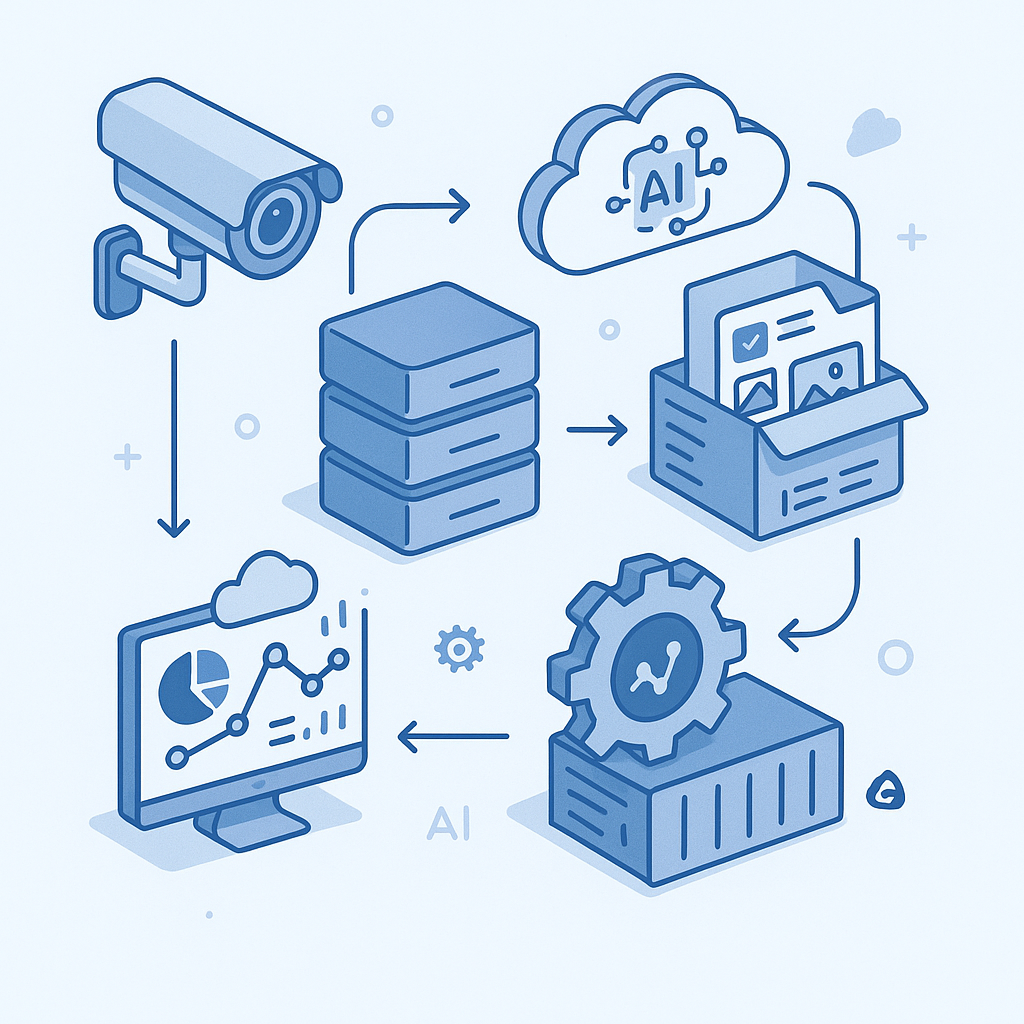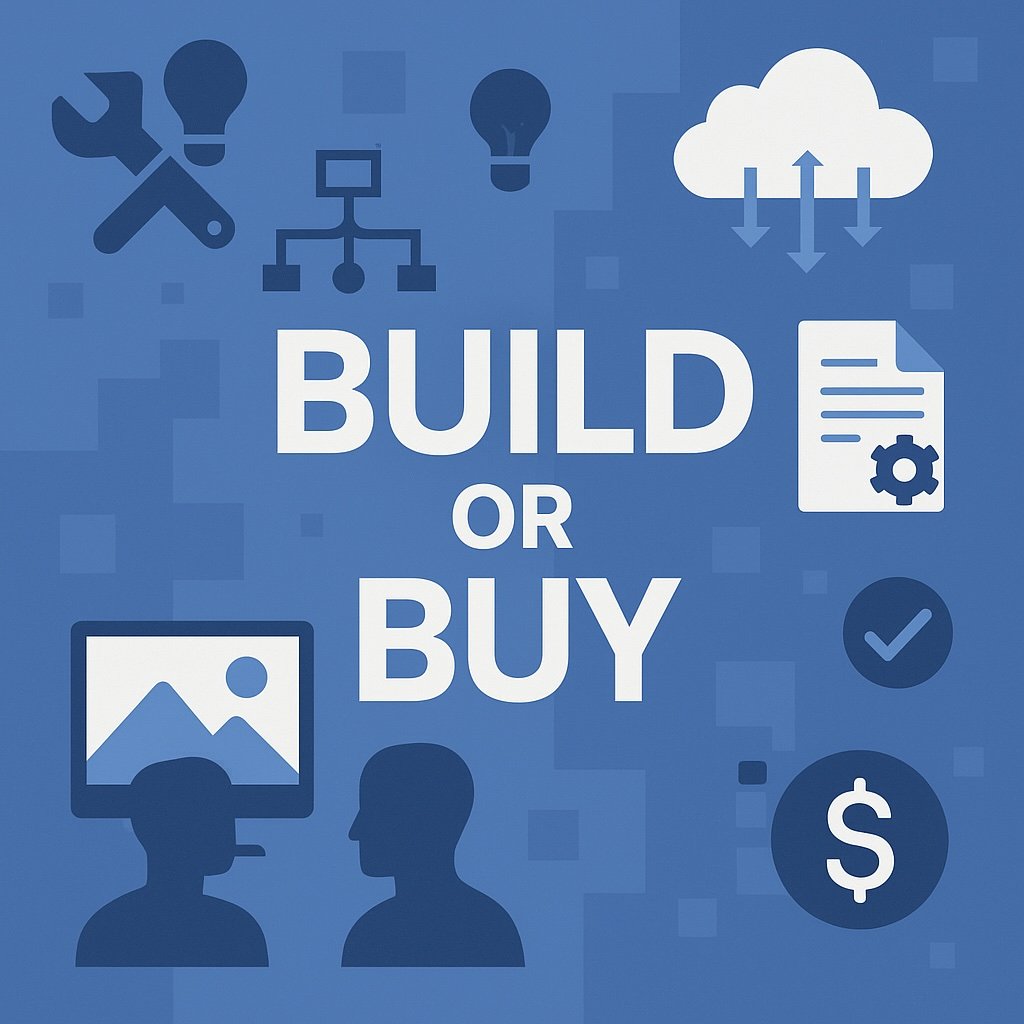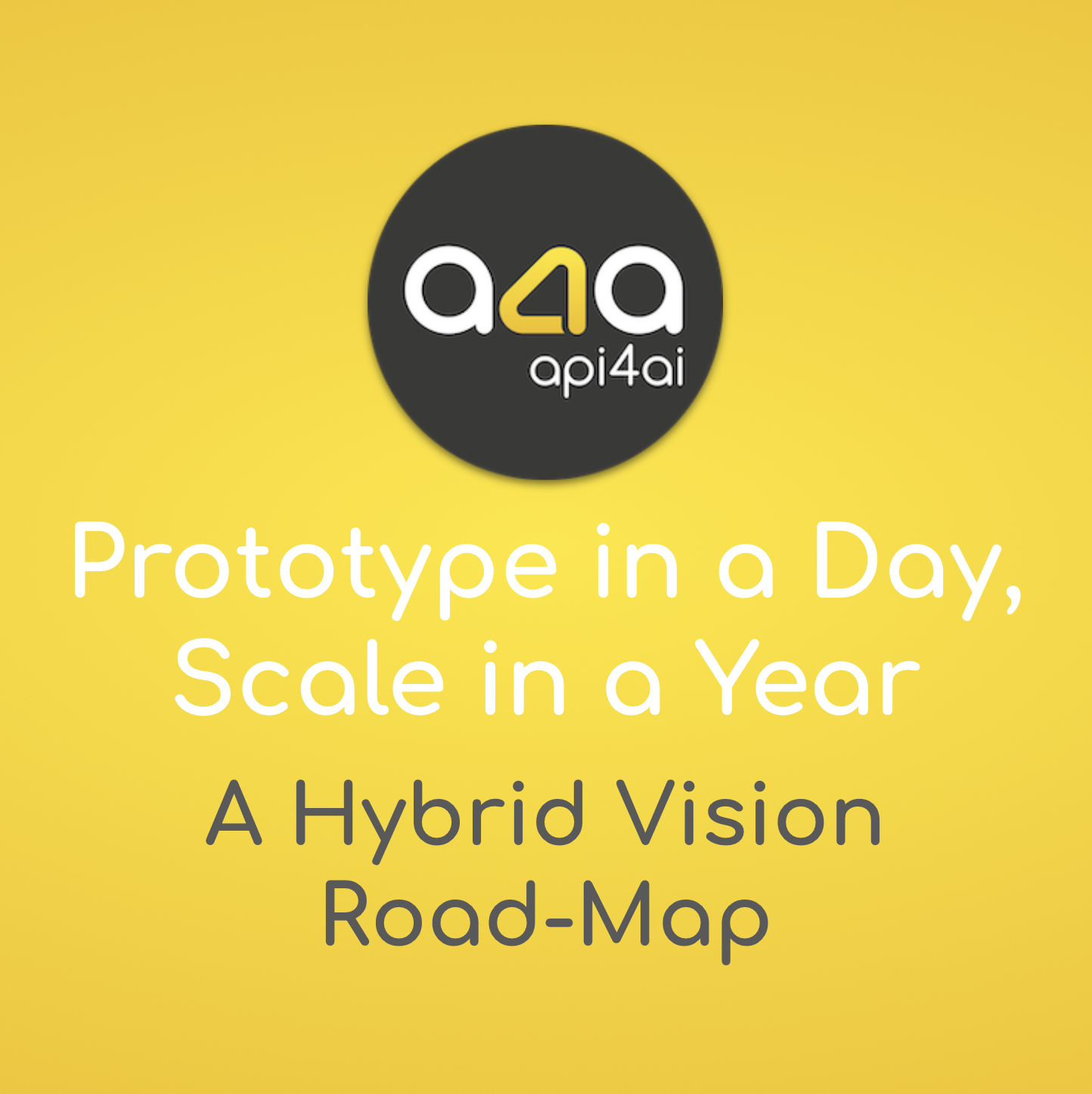
MLOps for Computer Vision: Automating the Model Lifecycle
As computer vision moves from experimental to essential, enterprises face a critical challenge: how to scale and maintain AI models in dynamic, real-world environments. Manual workflows can’t keep up. MLOps — the automation of the machine learning lifecycle — is becoming the key to unlocking long-term value from visual AI. In this post, we explore how modern MLOps frameworks help organizations accelerate deployment, reduce operational risk, and turn AI into a sustainable competitive advantage. From prebuilt APIs to self-healing pipelines, discover how to future-proof your vision strategy.

Build or Buy: How to Make the Right Choice
In today’s fast-paced digital landscape, organizations are under growing pressure to adopt AI-powered image processing. But when it comes to enabling computer vision capabilities, should you build a custom solution or buy a ready-made API? This post explores the strategic trade-offs, key decision criteria, and hybrid approaches that can help you make the right choice — faster, smarter, and with long-term value in mind.
From Pixels to Insights: Why Cloud Vision APIs Win
Cloud-hosted Vision APIs are redefining how companies approach image processing — offering faster deployment, lower costs and zero infrastructure headaches. From OCR to object detection, teams can go from prototype to production in hours, not months. This post unpacks the hidden DevOps savings, hosting economics and hybrid paths that make cloud-first vision not just viable — but smarter.

Off-the-Shelf vs Bespoke: The Total Cost of Ownership Showdown
Off-the-shelf AI APIs offer instant results and zero setup — perfect for fast-moving teams. But as usage scales, costs and limitations can creep in. This post breaks down the real total cost of ownership (TCO) for both plug-and-play APIs and custom-built computer vision solutions. From hidden dev-ops expenses to compliance hurdles and breakeven calculations, we provide a clear framework to help you decide when to rent, when to build and how to future-proof your AI strategy.

Talent vs Toolkit: Building an In-House Vision Team or Renting Expertise
Building a computer vision-powered product? You don’t need to choose between hiring expensive AI experts or doing it all in-house. In this guide, we explore the real tradeoffs between recruiting top CV talent, upskilling your existing developers and renting expertise through APIs and AutoML platforms. From salary benchmarks to hidden infrastructure costs, we break down the total cost of ownership (TCO) and help you map the best strategy based on your product’s stage and priorities.

Prototype in a Day, Scale in a Year: A Hybrid Vision Road-Map
Computer vision is easier to start than ever — thanks to ready-made SaaS APIs that let teams build working prototypes in just hours. But what happens when those prototypes grow into high-traffic features, or when off-the-shelf models no longer meet performance, cost or accuracy demands? This blog post outlines a step-by-step, 12-month roadmap for scaling your vision AI stack — from your first API call to a fully containerized, GPU-powered infrastructure. Learn how to navigate the transition across three critical phases: the Day‑1 sandbox, the Month‑3 pilot, and the Month‑6 production rollout. Along the way, we break down key decision points, hybrid deployment strategies and tips for balancing fast results with long-term control. Whether you're experimenting with OCR, background removal or object detection, this guide helps you scale smart, reduce costs and prepare for growth.

When Off‑The‑Shelf Fails: Custom Vision Solutions
Off-the-shelf vision APIs have made image recognition more accessible than ever, offering quick deployment and basic object detection capabilities. But when it comes to high-stakes industries like manufacturing, healthcare, agriculture and smart cities, the limitations of generic models quickly become apparent. Edge cases, domain-specific anomalies and real-time processing demands often expose gaps that standard solutions can't fill.
Custom vision models bridge this divide by delivering precision-tailored image recognition, built specifically for your business needs. Whether it's identifying microscopic defects on an assembly line, monitoring crop health from drone footage or ensuring brand protection in retail, bespoke models provide unmatched accuracy, reduced latency and full control over data privacy.
In this article, we explore the full journey — from identifying the weaknesses of off-the-shelf APIs to planning, building, and deploying a custom vision solution. Learn how the right development partner, combined with clear project scoping and smart MLOps practices, can transform your operations, reduce costs and give you a competitive edge in a data-driven world.

From MVP to Production: A Complete Computer Vision Project Lifecycle
Bringing a computer vision model from a prototype to full production is a complex journey that goes far beyond just training an accurate neural network. A successful AI-powered vision system requires continuous refinement, real-world validation and seamless integration with broader software infrastructure.
In this post, we explore the complete lifecycle of a computer vision project, from data collection and iterative model training to deployment, monitoring and continuous learning. Along the way, we discuss key challenges such as uncertain estimates, evolving real-world conditions and the need for long-term optimization to maintain accuracy and scalability.
We also highlight the difference between ready-made APIs for quick deployment and custom AI solutions for businesses needing specialized performance and control. While off-the-shelf solutions can be a great starting point, investing in a tailored model often leads to higher ROI, reduced operational costs and long-term competitive advantages.
Whether you're experimenting with AI-powered image processing for the first time or looking to refine an existing solution, understanding the full lifecycle of computer vision is key to unlocking its true potential.

Key MLOps Challenges and Strategies for Small Businesses in Deep Learning
For small businesses adopting deep learning, managing AI models at scale can be a daunting task. Challenges like data management, costly training pipelines, deployment complexities and model drift can hinder success if not addressed properly. MLOps offers a solution by providing a structured framework to streamline AI workflows, improve model performance and reduce costs.
By leveraging cloud-based APIs, automated pipelines and continuous monitoring, small businesses can ensure their AI systems remain reliable and adaptable to real-world conditions. The future of MLOps will bring even more accessible tools, empowering small businesses to compete with larger players and innovate faster. Scaling AI isn't just for big enterprises — smart MLOps strategies can make it cost-effective and achievable for small businesses too.
